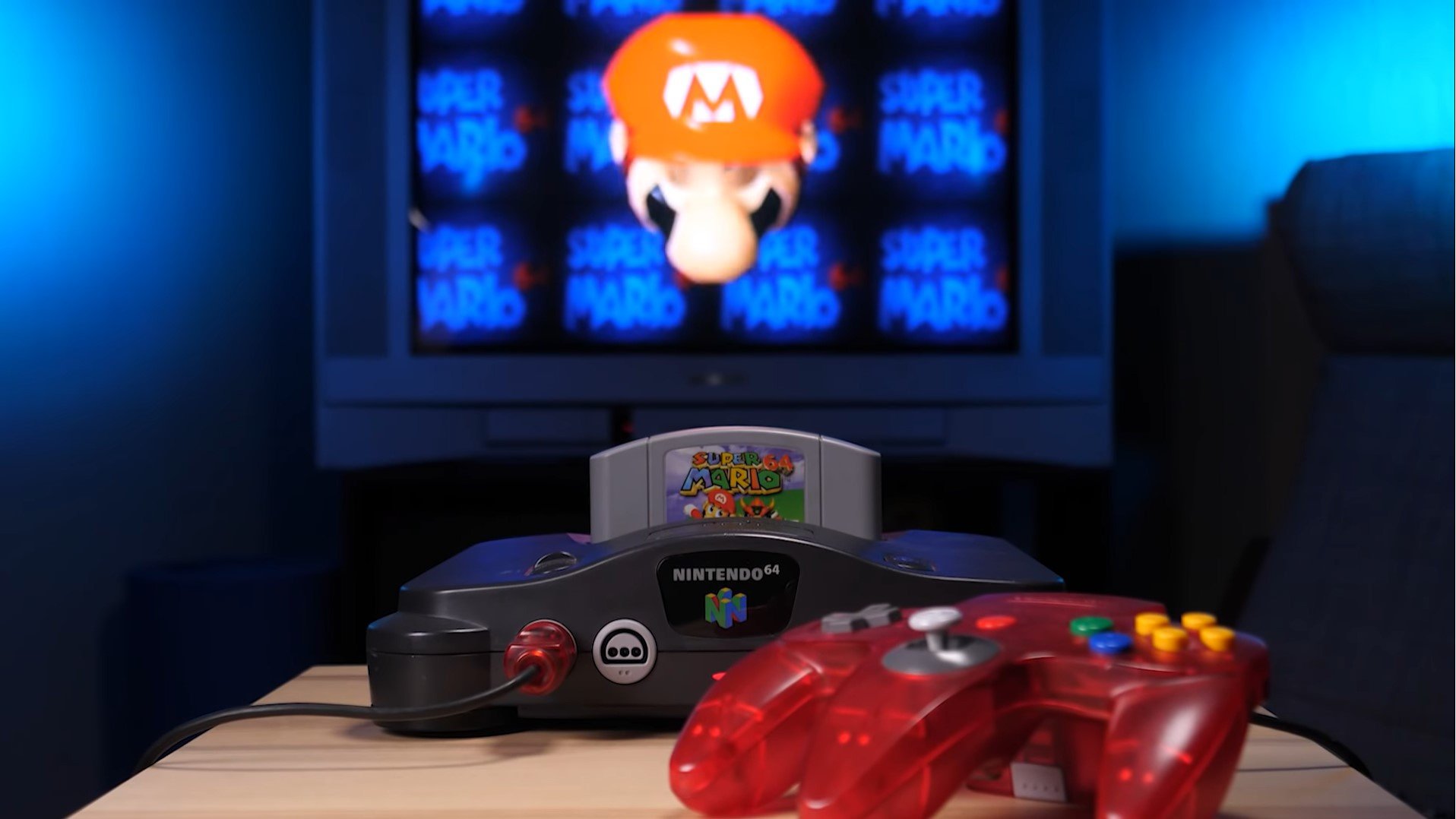Nintendo 64
At first glance, the Nintendo 64’s inclusion into our “What Went Wrong” series seems a bit odd. The Nintendo 64 finished in the second place of the 5th generation of consoles (sales wise), had incredible first (and second party) software sales numbers, and some of the greatest games ever made as part of its catalogue.
Unlike Sega with its Sega Saturn, it can be said that Nintendo made money on the Nintendo 64 and its software. However, Nintendo had a commanding share of the videogame home console market before 1995, and it lost most of it to Sony during the 32–64-bit era. So, what happened? How did Nintendo allow Sony to take the home console crown from their grasp? Let’s find out!
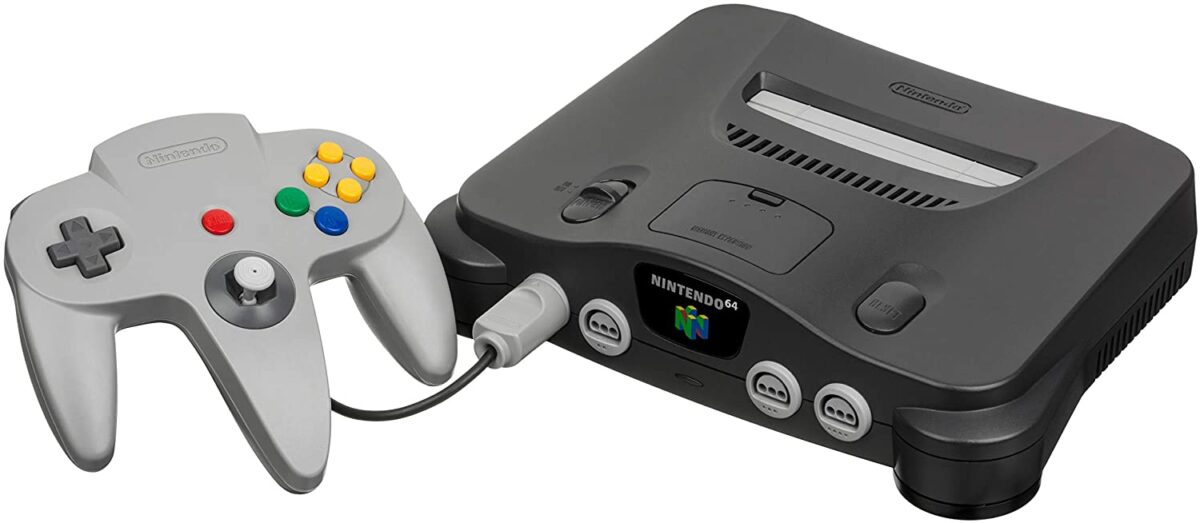
Sales: 32.93 Million Units Sold
GPU power: 100+ MOPS
|
Media Format |
Cartridge |
|
CPU |
64-bit NEC VR4300 @ 93.75 MHz |
|---|---|
|
Memory |
4 MB Rambus RDRAM (8 MB with Expansion Pak) |
|
Storage |
Internal battery saves in some cartridges, 32 KB Controller Pak |
|
GPU |
SGI RCP @ 62.5 MHz |
|
Audio |
16-bit, 48 or 44.1 kHz stereo |
Nintendo Creates its Future Tormentor
Nintendo 64’s fate might have been sealed by business dealings made between Nintendo and Sony 7 years before it launched on (U.S) September 29, 1996. Much has been said about Nintendo’s betrayal of Sony (who was working on a CD SNES add-on), and subsequent partnership with Phillps which eventually led to Sony deciding to create its own home console, the PlayStation. This chain of events led to Nintendo’s downfall as the king of home console makers.
Before passing judgement on Nintendo’s early miscues, let’s quickly summarize the events that took place between both Japanese juggernauts.
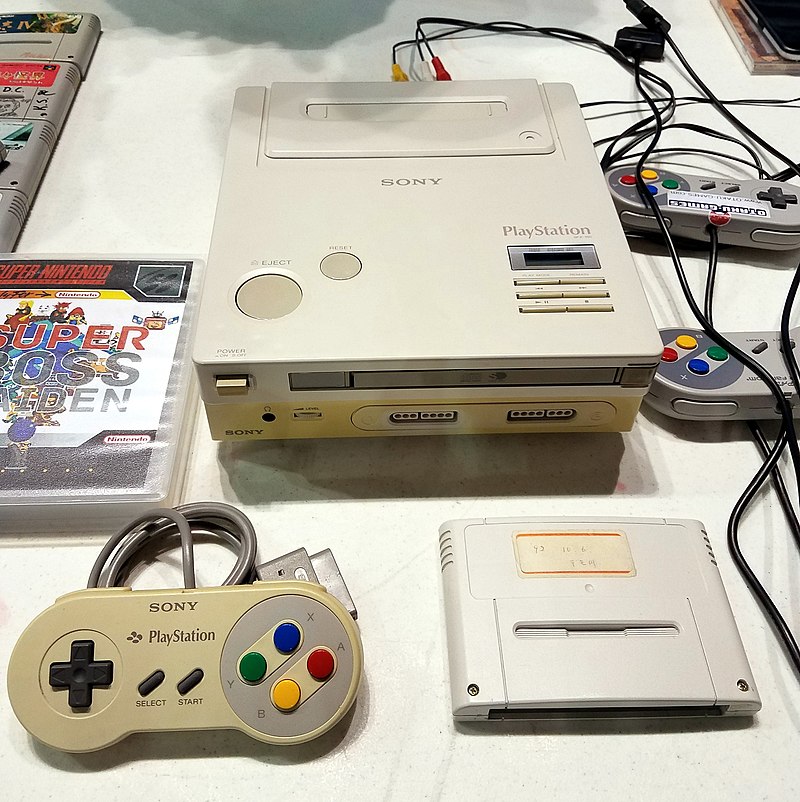
In 1988-89, both companies, Sony and Nintendo, began to work jointly on a dis-based SNES. Reportedly, Nintendo was the one to make the initial approach, as Ken Kutaragi (The eventual ‘Father of the PlayStation’) had designed the SPC-700 sound processor and had convinced Nintendo to use said technology on its upcoming Super Famicom (Super Nintendo Entertainment System in America).
From there, things would get a bit messier. Sony (and Kutaragi) wanted to enter the growing home console hardware business and partnering up with Nintendo (who held more than 90% of the video game market at time) just made good business sense.
The problem was that Nintendo found its deal with Sony “unfavorable”, as it handed Sony too much leverage over SNES software royalties, and rights. Under the deal Sony would be able to manufacture a SNES machine called (according to a 1991 NY Times report) the “Game Player” (other sources claim it was called the “Super Disk” and others the “Play Station”). The game Game Player would play SNES Cartridges, format to which Nintendo had sole control of, but would also play disk-based games, and multimedia (music and perhaps at some point films).
Nintendo found Sony’s deal unfavorable as Sony would have the international rights to every disk-based game sold on the “Game Player”. Added to that, Sony would have sole command of any licensing related to music, and film products made for the format.
Sony took the stage at the 1991 Consumer Electronics Show to announce its partnership with Nintendo, only for Nintendo to announce a partnership with one of Sony’s rivals (Phillips) the very next day. Nintendo’s move was certainly one of the oddest ‘betrayals’ seen in the business world at the time.
Clearly, Nintendo felt that Sony was utilizing its brand, and software IPs in order to bolster their entry into the console market. Howard C. Lincoln, senior vice president of Nintendo of America, cited ‘technical obstacles’ as the driving force behind the split “Our engineers reached the conclusion that from a technical standpoint that it was better for Nintendo to work with Philips.”
Obviously, it was about how Nintendo would have been handing Sony a large degree of control of a 4.7 Billion dollar market that they had ‘resurrected’ and dominated after the Video Game Crash of 1983. Nintendo had not exerted control of 90% of the market by being friendly and forgiving in its business approach.
Nintendo was tyrannical to third parties with a “You need us, and we don’t need you” attitude, and the company would be damned if they fell prey to Sony with a less than appealing business deal for its side.
Be as it may, the move forced Sony (after they tried to partner up with Sega) to go solo with its “Play Station” console. 1995’s PlayStation would change everyone’s fortunes, helping to drive Sega into ruin, and knocking Nintendo off its high perch.
Nintendo Made Consoles for Nintendo…Third Parties be Damned CD Vs Cartridge
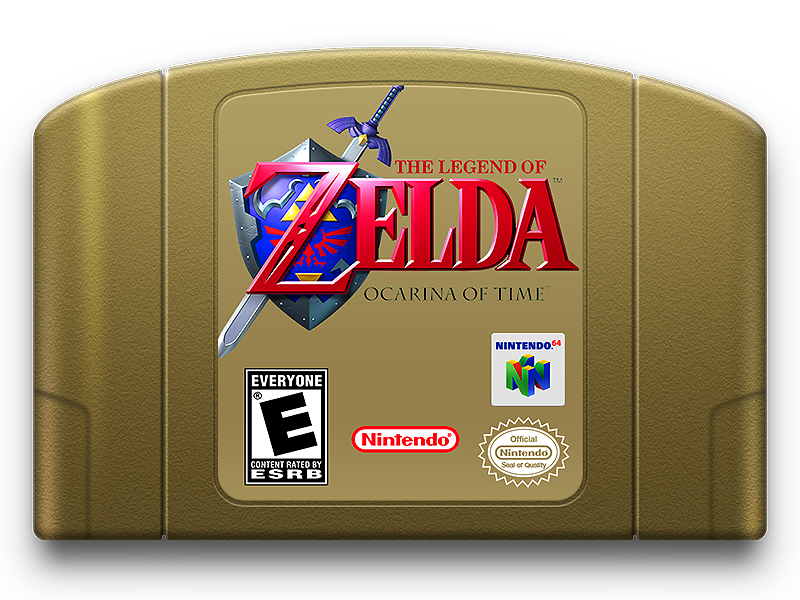
In a dumbfounding move of epic proportions, even though the industry had been moving towards CD-ROM as the preferred format for games during the mid 90s, Nintendo decided to stick to cartridges for its 64-bit game console. The move handicapped Nintendo’s efforts in making the Nintendo 64 the most powerful gaming machine at the time of its release.
The Nintendo 64 had a better graphics processor, twice the amount of RAM (four times as much with the RAM Pak) and a much faster CPU than the PlayStation. This hardware advantage, during the early 3-D days should have been enough to grant the Nintendo 64 a reasonable advantage over its competition.
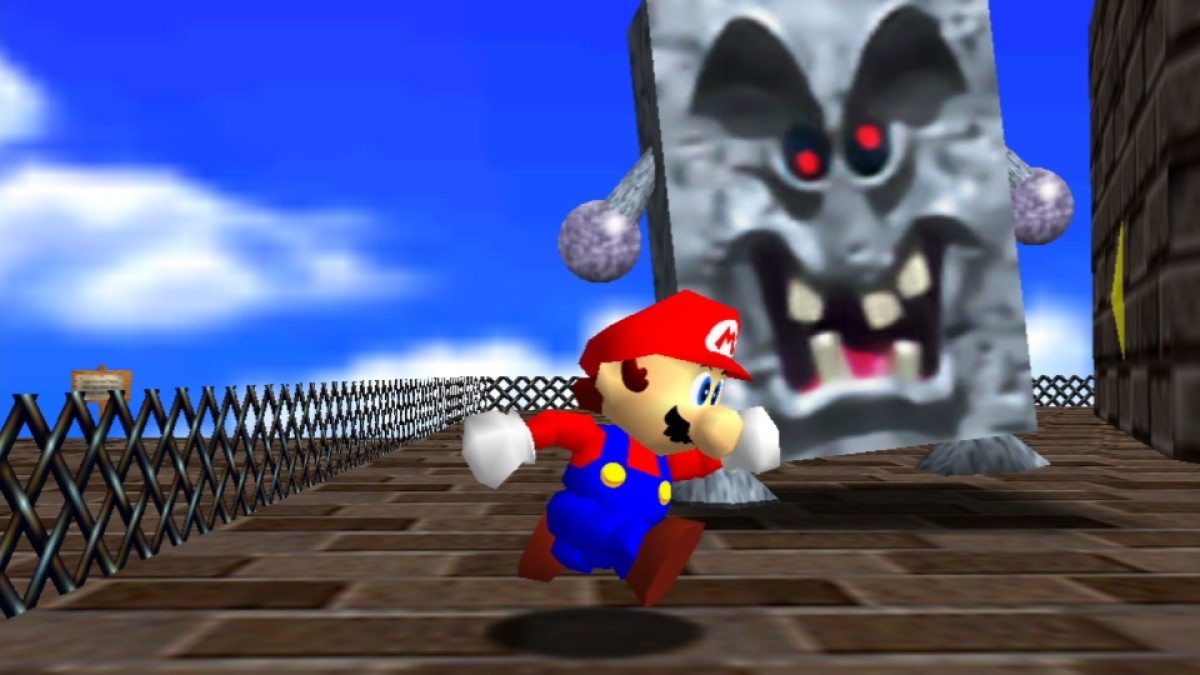
To be fair, at launch, the Nintendo 64 broke all console sales records on the strength of the groundbreaking Super Mario 64. Selling 350,000 units during its first 3 days on US soil, the console seemed destined to retain Nintendo’s crown as the home console king. By early 1997, the N64 was outselling the PlayStation and the Sega Saturn.
Nintendo had banked on its powerful machine, and Miyamoto’s Super Mario 64 to sell its system. It was a solid plan, this is how the company had won the NES, and SNES generations, on the strength of its excellent first party software.
Take away Capcom’s Street Fighter II, and the top ten best-selling SNES were all first party Nintendo titles. Take away Squaresoft’s Final Fantasy (and Chrono Trigger), and Enix’s Dragon Quest and Nintendo also had total control of the top selling 20 games on the 16-bit system.
Basically, by going with Cartridge as a media format for the Nintendo 64, Nintendo ensured a repeat of its software dominance with its 64-bit system. Nintendo alienated most of the big third-party developers. It wasn’t just the cartridge format that kept developers (and publishers) away, it was Nintendo’s less than ideal conditions and publishing deals.
Publishers had to buy game cartridges from Nintendo, which were expensive. Cartridges went as high as $30 a pop. By contrast, PlayStation CDs cost $1 to manufacture. Under these numbers, it cost a publisher 1-3 million dollars just to print out 100,000 copies of any given game on the Nintendo 64. This meant, that publishers were at a disadvantage to Nintendo when pricing their games on the market. To make a profit on the carts, third party games would have to be priced higher than Nintendo’s own.
Added to this, CDs could be manufactured in large quantities quickly (days), while a run of cartridges would take a few months to produce. It wasn’t close, the advantages that CDs presented at the time far outweighed the cartridge format’s “benefits”.
In easy to understand words, if I was a game maker in the mid 90s, Sony’s Developer friendly ecosystem provided a bigger opportunity for my business to succeed. In the case that I published a poor selling title (which was a high possibility for a start up developer), Sony provided a much larger cushion for my business to survive.
Squaresoft and Final Fantasy VII
I could attempt to summarize Squaresoft’s mid 1990s split with Nintendo, but vice president of Square USA Shinichiro Kajitani couldn’t have explained the situation better in the following statement:
“At that time, Square was really close to Nintendo — we were basically like a second party for them. So when their new system was in development, we gave them lots of advice, like, “You’re going to need a CD-ROM drive for it,” “You don’t have enough bandwidth to do what we’re trying to do,” and, “With what you have now, we’re not going to be able to make an RPG.” We gave them lots of advice. But [Nintendo president] Yamauchi-san at Nintendo basically refused to listen to any of it. And that’s when Sakaguchi-san and the management team at Square decided, “OK, we’re going to go with Sony now.” — Shinichiro Kajitani Vice president, Square USA
Squaresoft, at the time, was in full throttle mode working with new SGI stations while crafting the game that would eventually become Final Fantasy VII. They (the developers) understood that they wanted to utilize full motion videos for cinematic cutscenes, and pre-rendered backgrounds for the game’s ‘worlds’. Pre-rendered backdrops allowed for more realistic detail than polygonal graphics did at the time.
Both (FMV, and pre-rendered backdrops) visual presentation methods required extraordinary amounts of storage space. After all, Final Fantasy VII ended up being shipped in 3 Discs. A disc could hold up to 700 MB of space. In contrast, Super Mario 64 ( probably the biggest cart game ever made at the time of its release) came packed within an 8MB cart.
Clearly, Squaresoft’s vision for the future of the Final Fantasy series was incompatible with the Nintendo 64 due to the console’s chosen format for media storage. Conversely, Nintendo (and President Hiroshi Yamauchi) felt that its console should cater to Nintendo EAD’s game making vision, and the rest of development world would have to make the proper adjustments.
Squaresoft leaving Nintendo is key here, because apart from Nintendo itself, Squaresoft had some of the highest selling titles on the SNES, and the company was trending in the right direction, even if Nintendo (and Sony to a degree in the early days) did not expect the J-RPG genre to break into the mainstream in the way that it did with Squaresoft’s 1997 mega-hit, Final Fantasy VII.
The split was ugly–Nintendo’s Yamauchi wasn’t know for being forgiving, or for his nice treatment of third parties. In fact, Yamauchi was not angry at Square for leaving, but for leaving and convincing other giant publishers to do the same (Enix).
Squaresoft received a very friendly deal from Sony, both in terms of royalties, and in terms of marketing costs (Sony covered a great deal Final Fantasy VII’s marketing costs in the U.S.). The deal that Squaresoft received from Sony was a far cry from the tyrannical contracts imposed by Nintendo on the other side of the street. It was not close, if you were a developer/publisher in those days, Sony was just too attractive to turn down.
So, knowing this… why did Nintendo refuse to make the Nintendo 64 an attractive machine for third parties? One word: Arrogance.
Super Mario 64
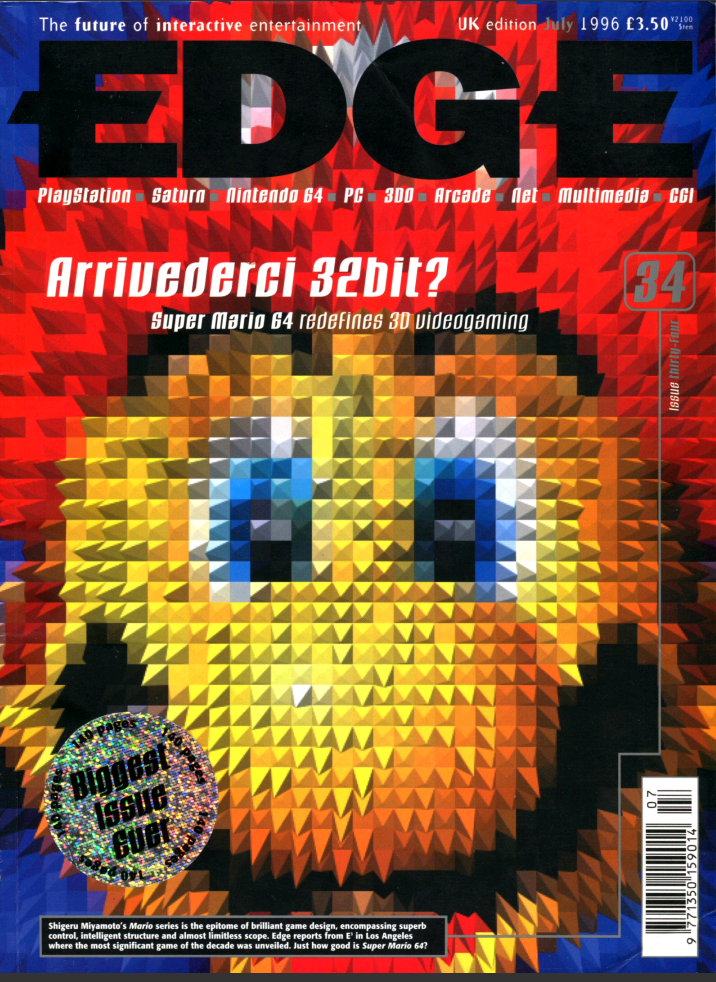
Nintendo claimed that it decided to go the Cartridge route because cartridges were more difficult to pirate. This was true, but the likely primordial reason for staying with cartridges was to keep exerting the company’s stronghold over the industry by controlling who got to make games for its system, and the terms by which these developers were allowed to make games for the console. Nintendo was the sole manufacturer of the cartridges, you could only buy cartridges from them if you wanted to publish a game on the console.
Now, that we have the gift of hindsight, and have seen how Sony took over the industry during the late 1990s, it is easy to say: “Well, Nintendo was dumb! They should have gone CD, and made developer friendly deals.” But, the future was not so obvious then.
At the time, Sega was still seen as Nintendo’s main rival, and Sega was making some big blunders on its own part. Sony was an inexperienced new comer, that had no internal studios (much less, studios with the stellar track record of Nintendo’s own teams), and had only started to become dangerous when Japanese publishers like Square, and Namco flocked to its waters.
Knowing this, I can see how Hiroshi Yamauchi and Nintendo’s executives felt that the Nintendo 64 launching alongside the revolutionary Super Mario 64 would be enough to bury both Sega, and newcomer Sony into the ground.
As early as 1995, Yamauchi was touting Super Mario 64 as the “Best video game ever created.” Yamauchi was right in his assessment, the world had never seen anything near as mind-blowing as Super Mario 64 promised to be at the time of its release on September 1996.
We take 3-D games for granted now. However, back in the 1995-1996 3-D games were really terrible. No one had quite figured out how to create large (cohesive) beautiful worlds with responsive controls, fluid movement and the proper camera perspective. Thus, Super Mario 64 was much more than just a game, it was truly an unrivaled experience at the time of its release.
In fact, if played today, save for some odd camera angles (which Nintendo allowed players to control), Super Mario 64 doesn’t play that much differently from Super Mario Odyssey. Improvements have been made to games, and camera perspectives since Mario 64 in 1996. These improvements have been mostly of the cosmetic and performance variety. Against all odds, Nintendo EAD and Shigeru Miayamoto really crafted the ‘101 manual’ of how to make 3-D games almost perfectly on their first try with SM64.
Nintendo had always sold its systems based on the quality of its first party titles, and Super Mario 64 was just as revolutionary (if not more) as Super Mario Bros. had been for company a decade earlier.
Basically, on September, 29, 1996 Nintendo delivered the world’s most powerful hardware, with the most impressive game of all time as its “killer app”.
What could possibly go wrong?
All of your Eggs in one Basket (Quality over Quantity)
In the period of late 1996 to early 1997, all went as predicted, and expected by Nintendo. The company was outselling its competition on the strength of how impressive Super Mario 64 looked (and played). Super Mario 64 (impressively) sold 5.9 million copies on US soil between 1996-2002. That number made SM64 the highest selling game on the U.S. from 1995-2002.
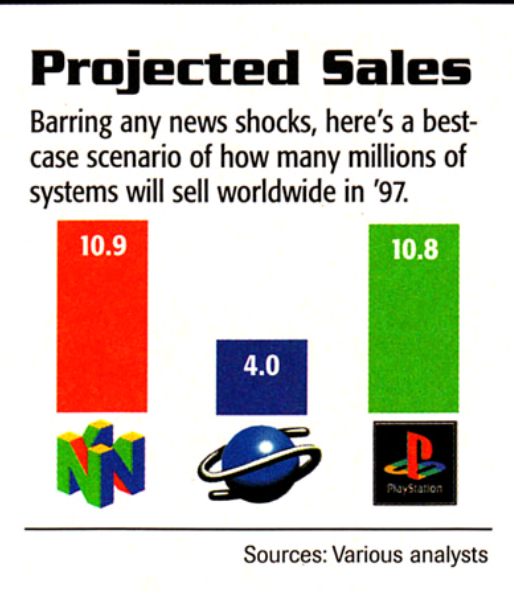
Cleary, Nintendo was in a good a position at the start of 1997. The company had created what many hailed, at the time, as the greatest video game ever, but Sony wasn’t resting on its laurels. Super Mario 64 wouldn’t sell N64 units forever.
We’re going to be releasing a lot of games that do things that have never been done before. We still have those doubts sometimes: “is this really going to be fun?”… but it’s precisely because it’s something weird that we want to try it! The N64 is that kind of hardware — Shigeru Miyamoto, 1996 Japanese Interview
Shigeru Miyamoto did not lie in a 1996 interview conducted for a Japanese strategy guide when he stated that Nintendo would be releasing games “that do things that have never been done before.” What was misleading in the above paragraph was the “A lot of games” phrase.
Nintendo’s first party gems would be too few and far in between during the Nintendo 64’s life cycle, and it would prove to be the deciding factor in the console falling behind the PlayStation’s sales.
Super Mario 64 and Super Mario Kart 64 ‘held the fort’ strong for the console’s early 1997 period, but it wouldn’t be until Star Fox 64 (4 months later) that Nintendo would release another critical hit. After that, Nintendo 64 owners waited until August (4 months after Star Fox 64) to receive Rare’s legendary Golden Eye 007.
A pattern was established. Nintendo 64 owners would receive 3-4 amazing games per year…and not much else. Nintendo had the best games, but there were too few of them to make the N64 a more attractive option to Sony’s PS1 for most gamers.
In a damning statistic, only 47 Nintendo 64 games sold a million or more units, by contrast more than 120 PlayStation games were million unit sellers. In an even more damning fact, only a few games that reached the million units sold (Namco’s Museum, F-1 World Grand Prix, and 007: The World is Not Enough, THQ’s Wrestling games) were not Nintendo 64 first and second party exclusives.
The 32.93 million installed base of Nintendo 64 users mainly stuck to buying Nintendo’s own first party hits. Thus, third parties found Sony’s greener pastures much more enticing.
Arguably, no PlayStation game was more revolutionary than Mario 64 or The Legend of Zelda: Ocarina of Time (which remains the highest rated game of all time), but Sony’s machine offered a wider array of games from different genres that were of excellent quality, even if most couldn’t match the otherworldy quality of Nintendo’s best efforts.
In this regard, PlayStation’s large quantities of good to sometimes great games, defeated the very few, but amazing Nintendo efforts that seemed to arrive only twice a year. Nintendo’s ‘quality over quantity’ mantra would handicap Nintendo 64 (console) sales.
Nintendo placed all of its eggs on its own exclusive titles, but it wouldn’t be enough. In mid 1997 they would learn a hard lesson delivered by the same very developer that they had previously shunned. Going with cartridges would haunt them forever.
The J-RPG Boom
Home console history might have been different if Nintendo had put a CD drive on the N64. Nintendo’s insistence pushing the cartridge format forced many 3rd party developers out of the door, but none would deliver as crucial a blow to the Nintendo 64’s sales momentum as Squaresoft did in 1997 with its long awaited Final Fantasy VII.
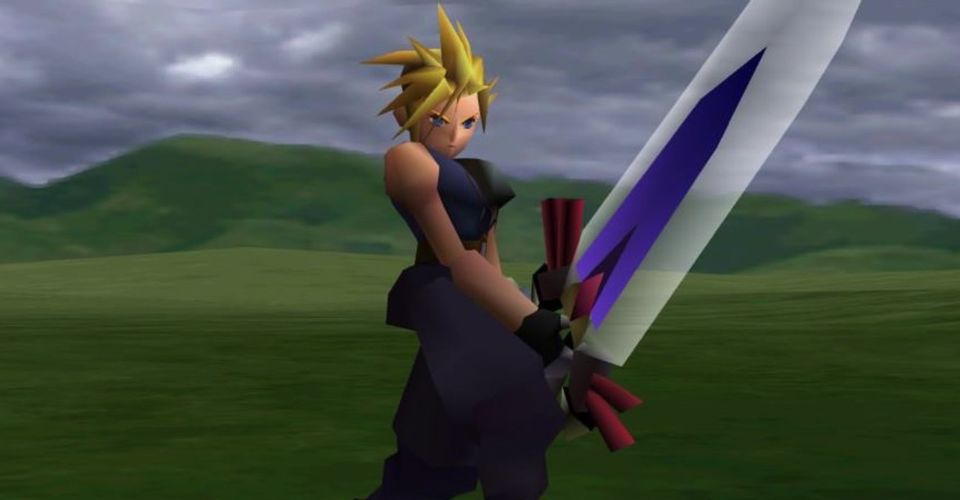
Prior to 1997, for the most part, Japanese Role-Playing Games had been a niche genre out side of Japan. Even today, once could say, that the genre has fallen out of the mainstream gamer’s favor. However, from 1997-2002 one could make an argument that there was not a consistently hotter genre on the PlayStation brand than the JRPG.
It all started with Final Fantasy VII. Bolstered by a multimillion dollar marketing campaign (partly funded by Sony) Final Fantasy VII arrived on U.S. shores on September 1997. In truth, Final Fantasy VII, at least in terms of gameplay, didn’t do anything that the SNES Final Fantasy VI hadn’t already done. But its mix of pre-rendered backdrops along with impressive CG cutscenes took the world by storm.
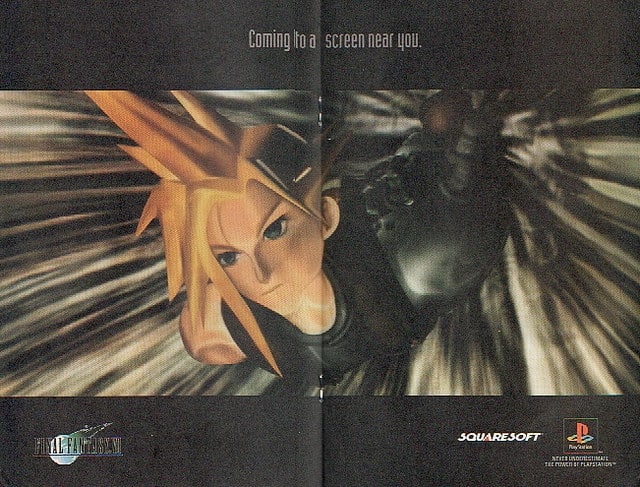
Final Fantasy VII showcased a visual style of presentation that just couldn’t be done on the Nintendo 64 due to the console’s low storage capacity cartridge medium. FFVII also demonstrated that Japan’s RPG genre could be sold to the masses when marketed properly.
Unfortunately for Nintendo, Final Fantasy VII’s success, and the subsequent flood of great PlayStation JRPGs caught the former home console king pin by surprise. Nintendo didn’t have any traditional JRPGs (not one, okay, it did have Quest 64, but you get my drift) to counter Sony’s quickly expanding JRPG library.
Out of Nintendo’s successful first party catalogue, only Super Mario 64 managed to out sell Final Fantasy VII (SM64 sold 11.9 million copies to FFVII’s 10 million units).
In the SNES era, no third party game came close to out selling Nintendo’s best IPs. But, the PlayStation ushered a new era, and Final Fantasy VII demonstrated a new trend of 3rd party (non Nintendo IPs) games on the PlayStation selling (and at times surpassing) Nintendo’s first party software sales numbers.
Nintendo no longer had the industry under its grip, and only a year after the N64 was launched the system already suffered from its small library of available titles.
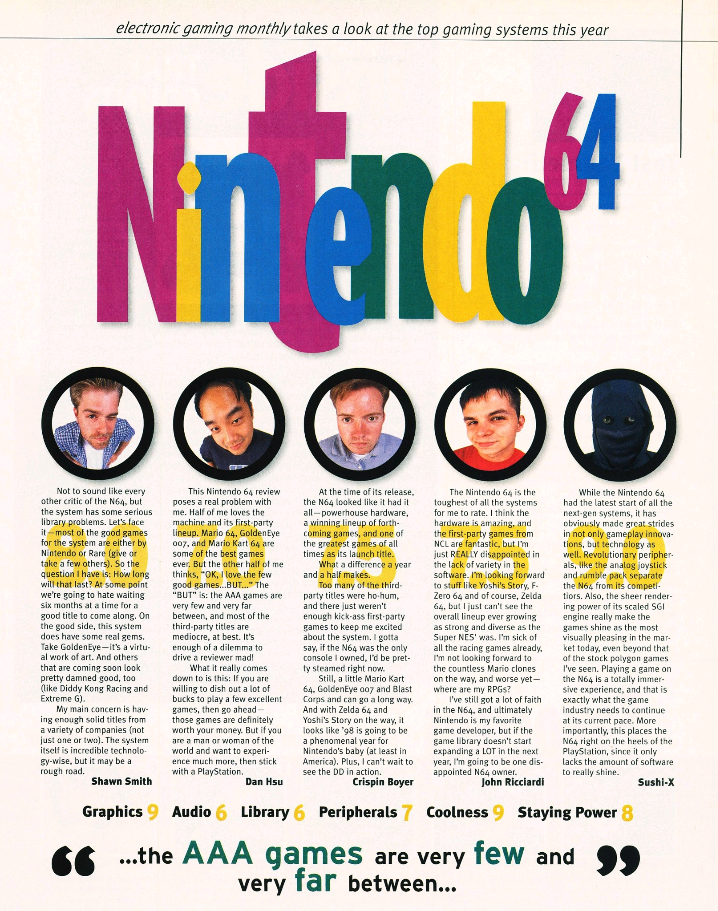
While Nintendo Lost its own Market Share, Sony Helped to Expand Video Gaming as a ‘Cool’ Pastime for Everyone
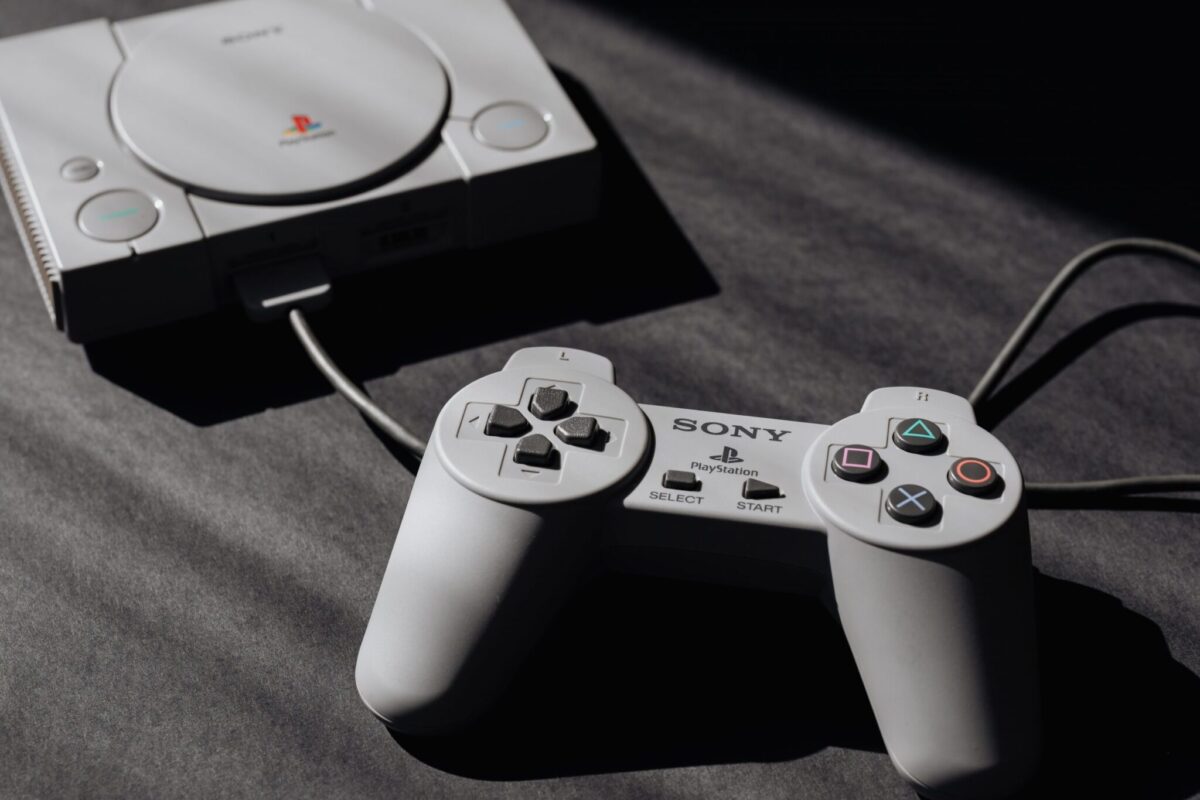
Sony’s brilliance in designing, and positioning its PlayStation console to both, developers and consumers cannot be understated. Basically, anything that could have gone right for the PlayStation, did go right.
Nintendo stuck to that what it knew with Super Mario 64, and Star Fox 64 early. The children to young teen market. As Sony, Nintendo, and Sega entered the 32-64-bit sales race, the video gaming market was primed for growth, but the right product needed to be introduced, and it was not the N64.
By the end of 1997, the PlayStation had AAA games like Tomb Raider, Tekken 2, Ace Combat 2, Final Fantasy VII, Ridge Racer, Resident Evil, and Wipeout as part of its library. Some of these games were retailing as low as $19.99 at the time, and more importantly, these games targeted older teens and adults.
Nintendo lacked a great 3-D fighter, a decent racer that was not Mario Kart, and had no JRPG or survival horror game to compete against Sony’s biggest hits. The PlayStation was a machine that was attractive to kids that had turned into teenagers during the SNES days, and to adults that might have not gamed before Sony’s third party partners introduced more mature content.
Sony stole a huge chunk of SNES/Genesis gamers that had grown into teenagers, and adults into its fold. Nintendo retained some of its faithful fans, and a segment of young kids, but it wasn’t enough to topple the new “mainstream” gamer which was much older than Nintendo’s targeted demographic.
Nintendo Did Have Mature Games

Now, Nintendo wasn’t oblivious to gamers growing older. Acclaim’s (which at this stage was a key part of Nintendo’s “Dream Team”) Turok was an M rated gory first person shooter, with ultra realistic visuals not possible on competing systems. Rare’s Golden Eye would arrive later in 1997 to take the world by storm. The game would go on to sell Nintendo 64 units to teen and college students (it was the hottest game in college dorms at the time) thanks to its violently fun 4 player split screen modes.
Nintendo dominated the First Person Shooting market thanks to the N64’s powerful hardware, and Golden Eye’s brilliance, but first person shooters would not reach true mainstream appeal until the 2000s.
1997’s Golden Eye (released on August of that year) moved consoles, and it would be Nintendo’s biggest hit (8 million copies sold) before the November 1998 release of The Legend of Zelda: Ocarina of Time.
Still, as great as Golden Eye was, it wasn’t sufficient to halt the growing interest in Sony’s Machine, the PlayStation library kept growing with dozens of AAA titles by every passing month, while the Nintendo 64 only received one such title every 4 months, it seemed.
Today, the average US gamer is 35 years old, and only 29 percent of the market is composed of the under 18 gamer segment. Could these demographic numbers have been possible without Sony? Without its PlayStation, it is likely that it would have taken video games longer to crash into mainstream success.
Nintendo games (few and far in between) were too expensive, and save for a few exceptions, did not appeal to a rapidly growing segment of young adult gamers. Sony bet on thrid party support and Nintendo alone (with Rare) couldn’t keep up.
Nintendo’s Failed Solution for its Media Storage Problems: The 64DD
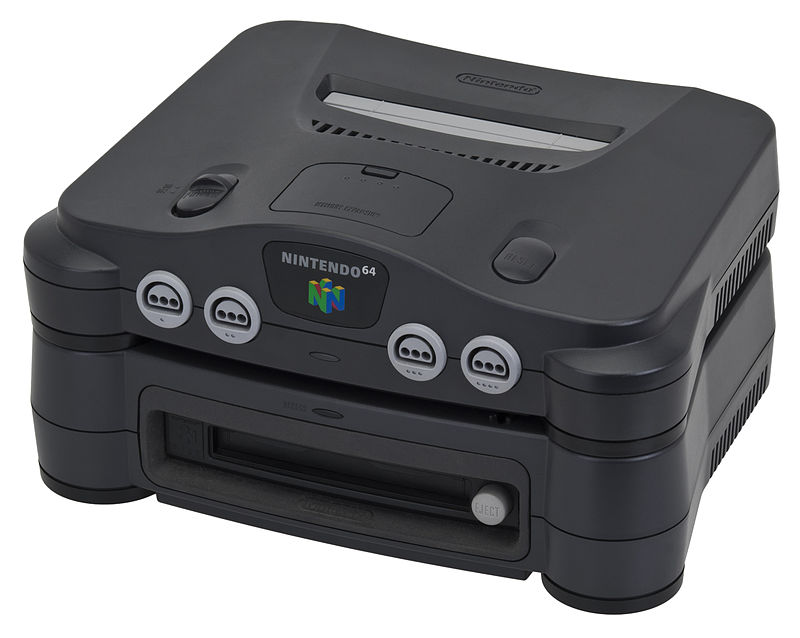
In our Top Ten Greatest Consoles of All Time piece last year, I wrote:
If going Cartridge for the N64 was (at least commercially) Nintendo’s biggest blunder, the absolute failure of the 64DD was its biggest embarrassment. This is a device that was announced, and perhaps existed since 1995 (The N64 came with a bottom port for the device since launch). Miyamoto ranted for hours on interviews about how Zelda (which ended up being the system’s greatest critical achievement) would make use of the 64DD in ingenious ways that only he -Miyamoto himself – could make possible.
In layman’s terms, the 64DD was, at least conceptually, a very integral part of the N64. Because the add on device never made it to America (or Europe), many of you reading this feature won’t even recall its existence, but most times that Nintendo was questioned about why they went with Cartridge by the media, their answer would always involve the 64DD in some way.
The existence of the 64DD is puzzling in many ways. Clearly, judging by the expansion port under the console, it was an integral part of the Nintendo 64 since its conception (or at least in its early planning stages).
What makes the add-on puzzling is that Sega had shown years before that such pricey contraptions, just did not sell well (and rarely got much third party support). What is even more puzzling is that the 64DD would not solve the Cartridge’s fundamental problem: Storage Space.
Nintendo game designer Shigesato Itoi tried to explain in the mid 1990s the gist behind the 64DD, “CD holds a lot of data, DD holds a moderate amount of data and backs the data up, and (cartridge) ROMs hold the least data and process the fastest. By attaching a DD to the game console, we can drastically increase the number of possible genres.”
In typical corporate fashion the above statement sounded great, if a tad confusing, but save for the ability to re-write data, the 64DD’s proprietary (Nintendo) floppy disk was really an extension of the Cartridge format that Nintendo was planning on using on the main system.
You still had to go through Nintendo (and its strict policies) because only Nintendo would make the floppy disks, and said storage medium could only hold 64MB of data…a number that pricey N64 cartridges would eventually also manage.
In other words, the 64DD really didn’t solve the main issue that had kept third parties away from Nintendo: Nintendo’s less than appealing deals, the cost to order a badge of cartridges, and the pure lack of storage space in the format. Thus predictably, it failed.
The 64DD would never make it outside of Japan where it only sold 15 thousand units. The system had online gaming capabilities (28k modem), and Zelda 64 would be its killer app, but none of that came to fruition. Nintendo 64 console sales were disappointing, and this fact caused Nintendo to rethink the launch of the pricey add-on outside of Japan.
By the time the 64DD launched in Japan (1999), the Nintendo 64 was far behind the PlayStation in sales. It made more sense for Nintendo to focus on selling its software while looking ahead to the next generation of consoles, and that’s what the company did, rest in peace 64DD.
Resident Evil 2 Showed that Cartridges Could Hold Heavy PS1 Ports
The Nintendo 64 would eventually receive a port of Capcom’s Resident Evil 2 in 1999. Utilizing Nintendo’s biggest available cart (64MB) the Nintendo 64 received a port of what had been one of PlayStation’s most important commercial hits in 1998.
It took a million dollar budget, and tremendous feats of engineering, but Resident Evil 2 was able to be compressed into a 64 MB cart (down from the original’s 2 Discs) in complete, if slightly blurrier form.
Yes…perhaps two cartridges could have held a game like Final Fantasy VII, with blurrier pre-rendered backgrounds, and compressed sound and full motion video, but the effort (and money) required to pull off such a feat would not have been profitable for Squaresoft in 1997.
What Went Wrong For The Nintendo 64 (Summary)
Cartridge Format – No other decision regarding the system’s design had a bigger impact on third parties flocking to Sony, and gamers finding a more diverse and economical library of games on the PlayStation than Nintendo’s decision to go with Cartridges as opposed to CD-ROMs.
Cartridges could go as high as $79.99 (the equivalent to $135 today) at retail stores, this was an extremely high price point, especially in the 90s. By contrast, PlayStation games could be found for $9.99-$19.99 after a few months, and new titles themselves were only $39.99-$49.99.
Given Sony’s more welcoming approach towards 3rd party development there was a lot of shovel ware crap released on the PlayStation, but also a vast amount of good to great games. Final Tally of Released Games for each system? PlayStation: 1284 N64: 388. Ouch!
First Party Focus -Nintendo clearly designed its media format, and the system’s controller to Shigeru Miyamoto and Nintendo EAD’s specifications. When Squaresoft suggested the CD-ROM format for the system and Nintendo paid them no mind, other publishers understood the company’s unsympathetic message towards third parties.
Lack of Diversity in Genres – This one is a direct result of the first two mishaps. Nintendo created the most powerful commercial gaming machine ever (1996), but then handicapped it behind the cartridge format. Apart from Sony offering better deals for publishers, it also offered the cheaper, greater, and less riskier media format. RPGs, Fighting, Racing, Survival Horror, amongst other genres were the popular games of the 32-64 bit era, and Sony had the most (and the best) of them.
The PlayStation offered a hefty library of choices in each genre, including the greatest racing games of that generation with the Gran Truism series. The best fighting games with the Tekken trilogy, and the best RPGs with the Final Fantasy games.
Other gems, such as Metal Gear Solid, Vagrant Story and Resident Evil 2 made sure that PlayStation owners had plenty of diverse and mature games to play.
By contrast, the Nintendo 64 had great platfomers, First Person Shooters, and multiplayer games. These genres really showcased the hardware’s impressive 3-D capabilities, and the brilliance behind the 4 controller port design of the console. But even then, Sony had offerings (of much lesser quality) in these genres too.
In short, if you owned a Nintendo 64, you had the greatest games ever created at your disposal, but you could count them all in one hand. On the flip side the PlayStation had something great for everyone, and you could literally fill house shelves with its library.
The Controller – Personally, I liked the controller. Arguably, on arrival it was superior to the competition’s efforts by offering an integrated joy-stick, and eventual rumble support. However, Sony quickly caught on, and launched its dual shock (dual stick) controller, and Nintendo never bothered to offer a similar (dual analogue stick) choice for its Nintendo 64 owners.
Sony – For all of its short comings, the Nintendo 64 got off to a historic start thanks to the brilliance of Super Mario 64. Had Sony not entered the console wars with its PlayStation and made all of the strategic business moves the right way, history would have been different.
Notice that I rarely mentioned Sega in this analysis. Once the Nintendo 64 entered the fray in 1996, Sega, for the most part, became a non-factor. Sega, between 1995-2001 (the year in which Nintendo 64’s successor launched) launched two major home consoles, and did not dent either Sony or Nintendo’s market share.
Sony drew popular game publishers away from Nintendo by offering friendlier deals and a cheaper (CD) format. Publishers that had previously stuck to Nintendo’s NES and SNES systems suddenly left Nintendo for its rival competitor. Nintendo couldn’t recover.
Nintendo 64’s Legacy
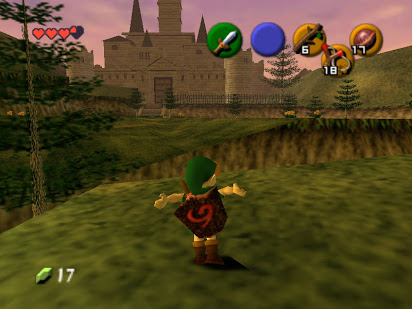
Considering that NER ranked the Nintendo 64 as its #4 favorite Console of all time, it is hard to classify the N64 as a “failure”. However, given that Nintendo’s reign (home console wise) came to an abrupt end during the Nintendo 64’s life cycle, it is fair to say that the console was a disappointment for the company in terms of sales.
With 32.93 million systems sold, Nintendo lost market share from the previous console generation (the SNES sold 49.10 million consoles). Many of its former customers flocked to Sony’s PlayStation, and in turn, Sony found a way to expand the home console market substantially by selling 102.49 million units.
While the margin of victory for the PlayStation was certainly wide, Nintendo still managed to outsell Sega’s paltry 9.26 Million Sega Saturn total. Sega would end up launching the Sega Dreamcast (1998 in Japan) in 1999, but with lifetime sales of 9.13 million units, the system was dead in the water by the time that the Nintendo 64’s successor arrived in 2001.
With that context in mind, the Nintendo 64 was moderately successful, and its first party software sales were excellent, if not spectacular. No PlayStation game outsold Super Mario 64. Even though there were 70 million fewer N64s installed in households, Ocarina of Time, Golden Eye 007 and Mario Kart 64 managed to sell in high numbers comparable to PlayStation’s biggest sellers.
The Legend of Zelda: Ocarina of Time sold a few more million copies than the SNES’s A Link to the Past, showing that at least that particular franchise saw tremendous growth from the previous SNES generation on the Nintendo 64.
Nintendo made money on the Nintendo 64, and coupled with its continued dominance of the handheld market (and Pokemon’s booming business) Nintendo was in a good place during the 5th generation of home consoles.
That said, Nintendo would continue to lose market share to Sony, and new comer Microsoft as Nintendo 64’s successor, the GameCube (21.75 million units sold), wouldn’t be able to rival its predecessor’s success.
Where the Nintendo 64 really shined was in the extraordinary quality of its games. Super Mario 64, and Ocarina of Time wrote the book on how to make proper 3-D games, and these titles have influenced subsequent 3-D games to this day. Ocarina of Time remains the highest rated game of all time, and games like Banjo-Kazooie, and Turok have aged surprisingly well.
Golden Eye 007 is given credit for popularizing first person shooters on home consoles before the advent of Halo: Combat Evolved (which in my opinion pushed the genre forwards).
The Nintendo 64 was also known as the party console. No other system provided such good times with 4 friends playing in split screen modes. Games like Smash Bros. (a franchise that is still selling strongly today), Mario Party, Mario Kart, Diddy Kong Racing, Golden Eye, WCW/NWO Revenge/WWE Wrestlemania 2000, and Perfect Dark made the system a must own for college students living at college dorms.
In late 1990s the Nintendo 64 had arguably the greatest lineup of 3-D games available on any system, but it had too few of them. As the last conventional home console that used gaming cartridges, and given the high quality of its small library, the Nintendo 64 holds a special place in many gamers’ hearts. The Nintendo 64 ended up being a disappointment for Nintendo, but it was not a failure.
Agree with the author? Couldn’t disagree more and are frothing at the mouth to tell him? Leave a comment here, on Facebook or send an email and make sure to follow Never Ending Realm on Facebook, Twitter, and YouTube!
